-
 Bitcoin
Bitcoin $95,365.3922
-0.93% -
 Ethereum
Ethereum $1,826.0434
-0.16% -
 Tether USDt
Tether USDt $1.0001
-0.06% -
 XRP
XRP $2.1863
-0.78% -
 BNB
BNB $589.2226
-1.60% -
 Solana
Solana $147.0557
-0.63% -
 USDC
USDC $1.0000
-0.04% -
 Dogecoin
Dogecoin $0.1728
-2.51% -
 Cardano
Cardano $0.6868
-4.19% -
 TRON
TRON $0.2479
0.72% -
 Sui
Sui $3.2697
-1.68% -
 Chainlink
Chainlink $14.0603
-1.99% -
 UNUS SED LEO
UNUS SED LEO $9.0867
1.51% -
 Avalanche
Avalanche $19.9540
-3.85% -
 Stellar
Stellar $0.2678
-1.41% -
 Toncoin
Toncoin $3.0669
-2.09% -
 Shiba Inu
Shiba Inu $0.0...01275
-2.71% -
 Hedera
Hedera $0.1768
-2.73% -
 Bitcoin Cash
Bitcoin Cash $355.2149
-2.90% -
 Hyperliquid
Hyperliquid $20.6870
0.54% -
 Litecoin
Litecoin $86.4387
0.20% -
 Polkadot
Polkadot $3.9412
-3.47% -
 Dai
Dai $1.0000
-0.01% -
 Monero
Monero $278.6772
-0.18% -
 Bitget Token
Bitget Token $4.3454
-0.88% -
 Ethena USDe
Ethena USDe $1.0004
-0.03% -
 Pi
Pi $0.5915
1.42% -
 Pepe
Pepe $0.0...08139
-2.35% -
 Uniswap
Uniswap $5.0662
-1.17% -
 Aptos
Aptos $5.1244
-1.41%
How to buy and sell DOT with limit orders? What is the difference between market orders and limit orders?
To buy or sell DOT effectively, use limit orders on platforms like Binance or Kraken to set specific prices, unlike market orders which execute instantly at current rates.
May 04, 2025 at 11:07 am
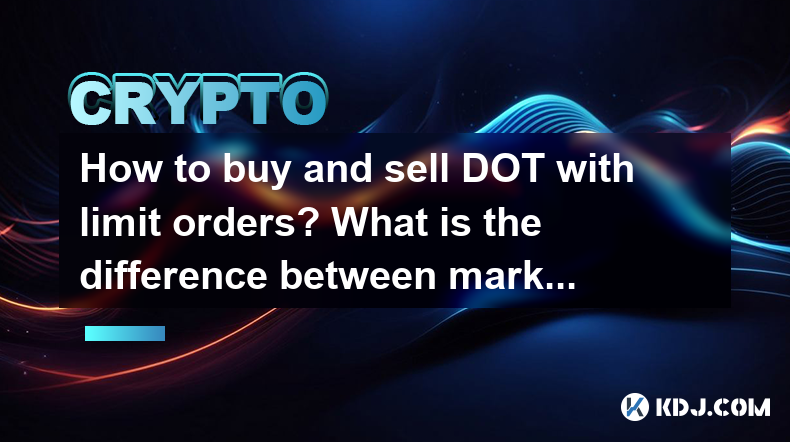
When trading cryptocurrencies like DOT (the native token of the Polkadot network), understanding the different types of orders available on trading platforms is crucial for effective trading. This article will guide you through the process of buying and selling DOT using limit orders and explain the difference between market orders and limit orders.
What Are Limit Orders?
Limit orders are a type of order used in trading where you specify the price at which you want to buy or sell a cryptocurrency. Unlike market orders, which are executed immediately at the current market price, limit orders are only executed if the market reaches the price you have set. This gives traders more control over their trades, allowing them to buy low or sell high at predetermined prices.
How to Buy DOT with a Limit Order
To buy DOT using a limit order, follow these steps:
- Choose a trading platform: Select a reputable cryptocurrency exchange that supports DOT trading and offers limit order functionality. Examples include Binance, Kraken, and Coinbase Pro.
- Log in to your account: Ensure you have a verified account on the chosen platform and sufficient funds in your wallet.
- Navigate to the DOT trading pair: Find the trading pair that involves DOT, such as DOT/USDT or DOT/BTC.
- Select the limit order option: On the trading interface, choose the option to place a limit order.
- Set your limit price: Enter the price at which you want to buy DOT. For example, if the current market price is $20 and you believe it will drop to $18, you can set your limit order to buy at $18.
- Specify the amount: Enter the quantity of DOT you wish to purchase.
- Review and submit the order: Double-check all details and submit the order. The order will be placed on the order book and will be executed if the market price reaches your specified limit price.
How to Sell DOT with a Limit Order
Selling DOT using a limit order involves similar steps:
- Choose a trading platform: Use a platform that supports DOT trading and limit orders.
- Log in to your account: Make sure you have a verified account and the DOT you wish to sell in your wallet.
- Navigate to the DOT trading pair: Go to the trading pair you want to use, such as DOT/USDT or DOT/BTC.
- Select the limit order option: Choose the option to place a limit order.
- Set your limit price: Enter the price at which you want to sell DOT. For example, if the current market price is $20 and you believe it will rise to $22, you can set your limit order to sell at $22.
- Specify the amount: Enter the quantity of DOT you wish to sell.
- Review and submit the order: Verify all details and submit the order. The order will be placed on the order book and will be executed if the market price reaches your specified limit price.
What Are Market Orders?
Market orders are orders to buy or sell a cryptocurrency at the current market price. They are executed immediately, ensuring that the trade is completed as quickly as possible. Market orders are useful when you want to enter or exit a position quickly, but they do not guarantee a specific price, which can be a disadvantage in volatile markets.
Differences Between Market Orders and Limit Orders
Understanding the differences between market orders and limit orders is essential for making informed trading decisions:
- Execution Speed: Market orders are executed instantly at the current market price, while limit orders are only executed if the market reaches the specified price.
- Price Control: Limit orders give you control over the price at which you buy or sell, whereas market orders do not guarantee a specific price.
- Risk and Volatility: Market orders can be riskier in volatile markets because the price at which the order is executed may differ significantly from the price when the order was placed. Limit orders can mitigate this risk by setting a specific price.
- Order Book Placement: Market orders are filled from the existing order book, while limit orders are added to the order book and may not be filled if the market does not reach the specified price.
Advantages and Disadvantages of Limit Orders
Advantages:
- Price Control: You can set the exact price at which you want to buy or sell, allowing for more strategic trading.
- Reduced Slippage: Limit orders can help avoid slippage, which is the difference between the expected price of a trade and the price at which the trade is executed.
- Potential for Better Prices: By setting a limit order, you may be able to buy at a lower price or sell at a higher price than the current market rate.
Disadvantages:
- Execution Uncertainty: There is no guarantee that a limit order will be executed, especially if the market does not reach your specified price.
- Missed Opportunities: If the market moves quickly, a limit order may not be filled, causing you to miss out on potential trades.
- Time-Consuming: Limit orders may take longer to execute, which can be a disadvantage in fast-moving markets.
Frequently Asked Questions
Q: Can I cancel a limit order if the market does not reach my specified price?
A: Yes, you can cancel a limit order at any time before it is executed. Most trading platforms allow you to view your open orders and cancel them if needed.
Q: Are there any fees associated with using limit orders?
A: Fees for limit orders vary by platform. Some exchanges charge a fee for placing a limit order, while others may only charge a fee when the order is executed. It's important to check the fee structure of your chosen platform.
Q: Can I use limit orders for all cryptocurrencies?
A: Not all cryptocurrencies are available for trading with limit orders on every platform. It depends on the liquidity and trading volume of the cryptocurrency. Always check the trading pairs and order types supported by your exchange.
Q: How do I know if my limit order has been filled?
A: Most trading platforms provide real-time updates on your orders. You can check the status of your limit order in the "Orders" or "Open Orders" section of your trading account. Once filled, the order will be marked as "Filled" or "Completed."
Disclaimer:info@kdj.com
The information provided is not trading advice. kdj.com does not assume any responsibility for any investments made based on the information provided in this article. Cryptocurrencies are highly volatile and it is highly recommended that you invest with caution after thorough research!
If you believe that the content used on this website infringes your copyright, please contact us immediately (info@kdj.com) and we will delete it promptly.
- Ruvi (RUVI) Is Coming to Disrupt the Blockchain Industry with Its Innovative AI-Powered Platform
- 2025-05-05 01:20:12
- Ever Since Money Went Digital, Cryptocurrency Has Taken Off
- 2025-05-05 01:20:12
- Arctic Pablo Coin's Unique Presale Melts Resistance as Dogecoin and FLOKI Chase the Trend
- 2025-05-05 01:15:12
- Filecoin Shows Rebound Potential While Chainlink Eyes Critical Resistance
- 2025-05-05 01:10:12
- Solana (SOL) is ready to pump thanks to strong technical indicators and ecosystem support.
- 2025-05-05 01:10:12
- Transparency and credibility are quickly becoming crucial in both AI and Web3
- 2025-05-05 01:05:12
Related knowledge
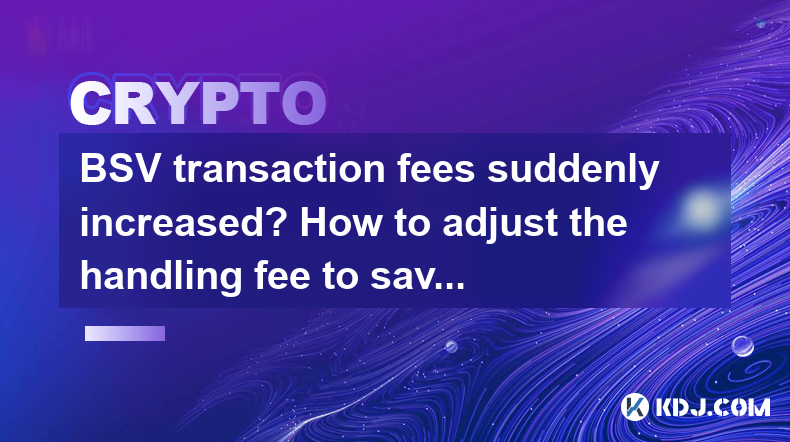
BSV transaction fees suddenly increased? How to adjust the handling fee to save costs?
May 02,2025 at 06:42am
Understanding BSV Transaction FeesBSV (Bitcoin SV) aims to fulfill the original vision of Bitcoin as a peer-to-peer electronic cash system. One of the key elements in this system is the transaction fee, which compensates miners for including transactions in the blockchain. Recently, users have noticed a sudden increase in BSV transaction fees, which can...
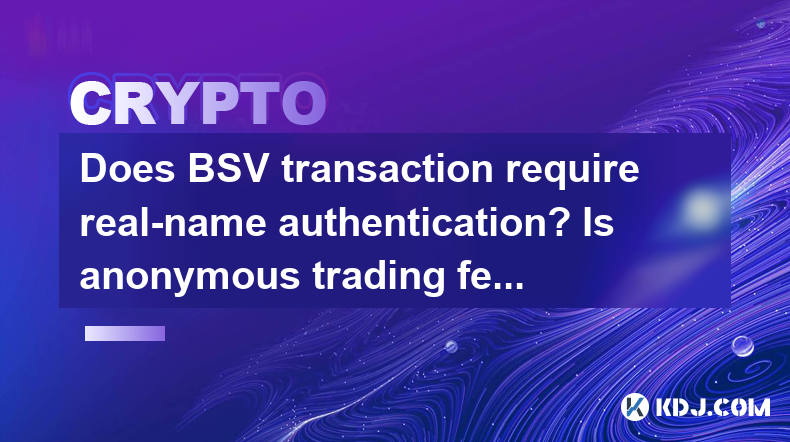
Does BSV transaction require real-name authentication? Is anonymous trading feasible?
May 03,2025 at 03:14pm
The question of whether BSV (Bitcoin SV) transactions require real-name authentication and whether anonymous trading is feasible is a complex one, deeply intertwined with the broader dynamics of cryptocurrency regulations and blockchain technology. Let's delve into these aspects to provide a comprehensive understanding. Understanding BSV and Its Transac...
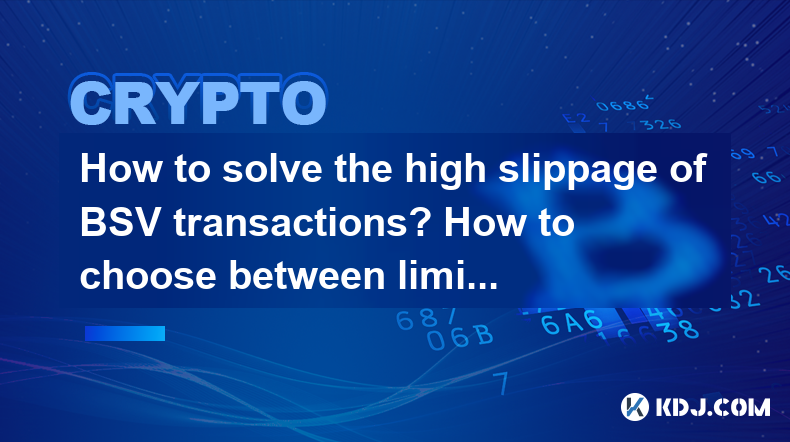
How to solve the high slippage of BSV transactions? How to choose between limit and market orders?
May 02,2025 at 09:01pm
High slippage can be a significant concern for traders dealing with Bitcoin SV (BSV) transactions. Slippage refers to the difference between the expected price of a trade and the price at which the trade is actually executed. This can occur in fast-moving markets or when there is low liquidity. To address this issue, understanding the mechanics of slipp...
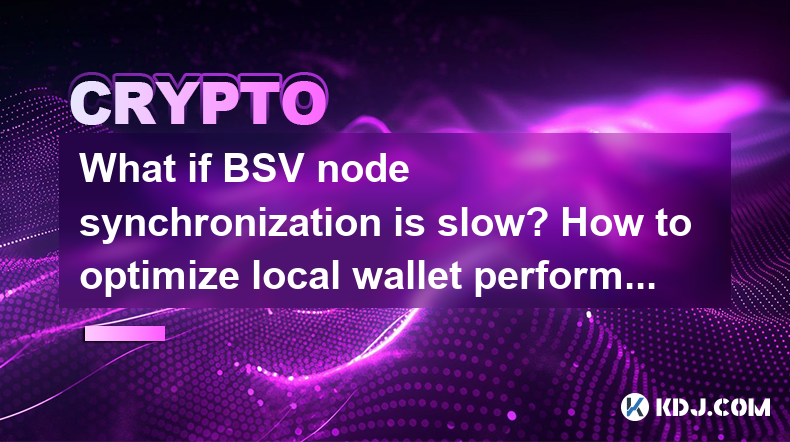
What if BSV node synchronization is slow? How to optimize local wallet performance?
May 03,2025 at 04:35pm
When dealing with BSV (Bitcoin SV) node synchronization and optimizing local wallet performance, it's crucial to understand the underlying issues and implement effective solutions. Slow synchronization and poor wallet performance can significantly hinder your experience with the BSV network. This article will delve into the reasons behind slow BSV node ...
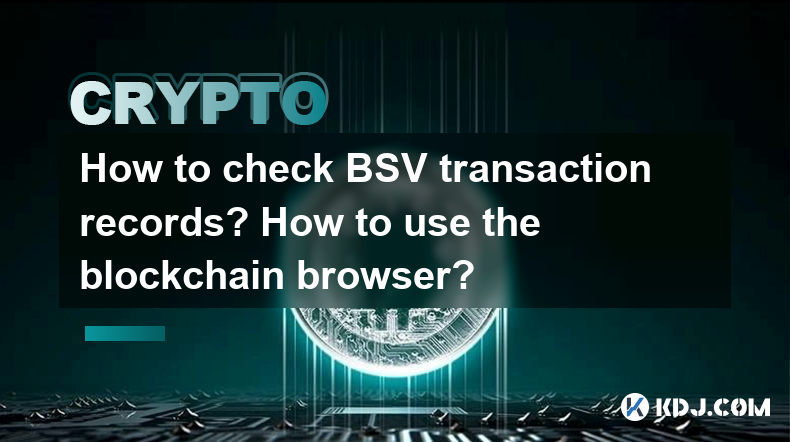
How to check BSV transaction records? How to use the blockchain browser?
May 03,2025 at 06:50am
Checking BSV (Bitcoin SV) transaction records and using a blockchain browser are essential skills for anyone involved in the cryptocurrency space. These tools allow you to verify transactions, check wallet balances, and understand the flow of funds on the blockchain. This article will guide you through the process of checking BSV transaction records and...
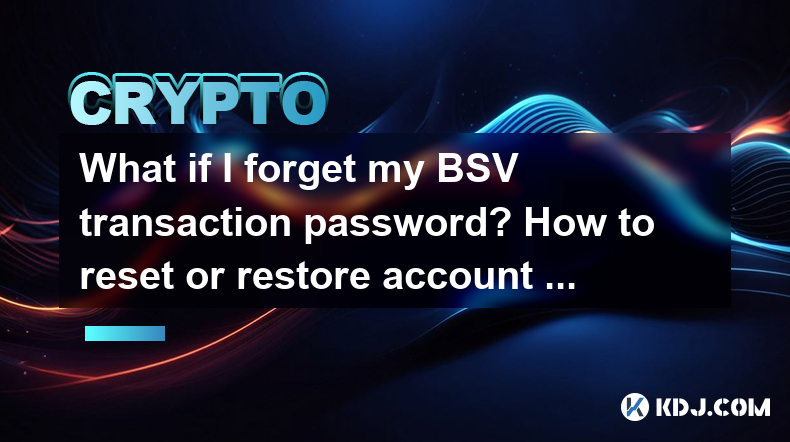
What if I forget my BSV transaction password? How to reset or restore account permissions?
May 02,2025 at 02:49pm
Forgetting your BSV (Bitcoin SV) transaction password can be a stressful experience, but there are steps you can take to reset or restore your account permissions. This article will guide you through the process, ensuring you understand each step and potential solutions available to you. Understanding BSV Transaction PasswordsBSV transaction passwords a...

BSV transaction fees suddenly increased? How to adjust the handling fee to save costs?
May 02,2025 at 06:42am
Understanding BSV Transaction FeesBSV (Bitcoin SV) aims to fulfill the original vision of Bitcoin as a peer-to-peer electronic cash system. One of the key elements in this system is the transaction fee, which compensates miners for including transactions in the blockchain. Recently, users have noticed a sudden increase in BSV transaction fees, which can...

Does BSV transaction require real-name authentication? Is anonymous trading feasible?
May 03,2025 at 03:14pm
The question of whether BSV (Bitcoin SV) transactions require real-name authentication and whether anonymous trading is feasible is a complex one, deeply intertwined with the broader dynamics of cryptocurrency regulations and blockchain technology. Let's delve into these aspects to provide a comprehensive understanding. Understanding BSV and Its Transac...

How to solve the high slippage of BSV transactions? How to choose between limit and market orders?
May 02,2025 at 09:01pm
High slippage can be a significant concern for traders dealing with Bitcoin SV (BSV) transactions. Slippage refers to the difference between the expected price of a trade and the price at which the trade is actually executed. This can occur in fast-moving markets or when there is low liquidity. To address this issue, understanding the mechanics of slipp...

What if BSV node synchronization is slow? How to optimize local wallet performance?
May 03,2025 at 04:35pm
When dealing with BSV (Bitcoin SV) node synchronization and optimizing local wallet performance, it's crucial to understand the underlying issues and implement effective solutions. Slow synchronization and poor wallet performance can significantly hinder your experience with the BSV network. This article will delve into the reasons behind slow BSV node ...

How to check BSV transaction records? How to use the blockchain browser?
May 03,2025 at 06:50am
Checking BSV (Bitcoin SV) transaction records and using a blockchain browser are essential skills for anyone involved in the cryptocurrency space. These tools allow you to verify transactions, check wallet balances, and understand the flow of funds on the blockchain. This article will guide you through the process of checking BSV transaction records and...

What if I forget my BSV transaction password? How to reset or restore account permissions?
May 02,2025 at 02:49pm
Forgetting your BSV (Bitcoin SV) transaction password can be a stressful experience, but there are steps you can take to reset or restore your account permissions. This article will guide you through the process, ensuring you understand each step and potential solutions available to you. Understanding BSV Transaction PasswordsBSV transaction passwords a...
See all articles




















































































